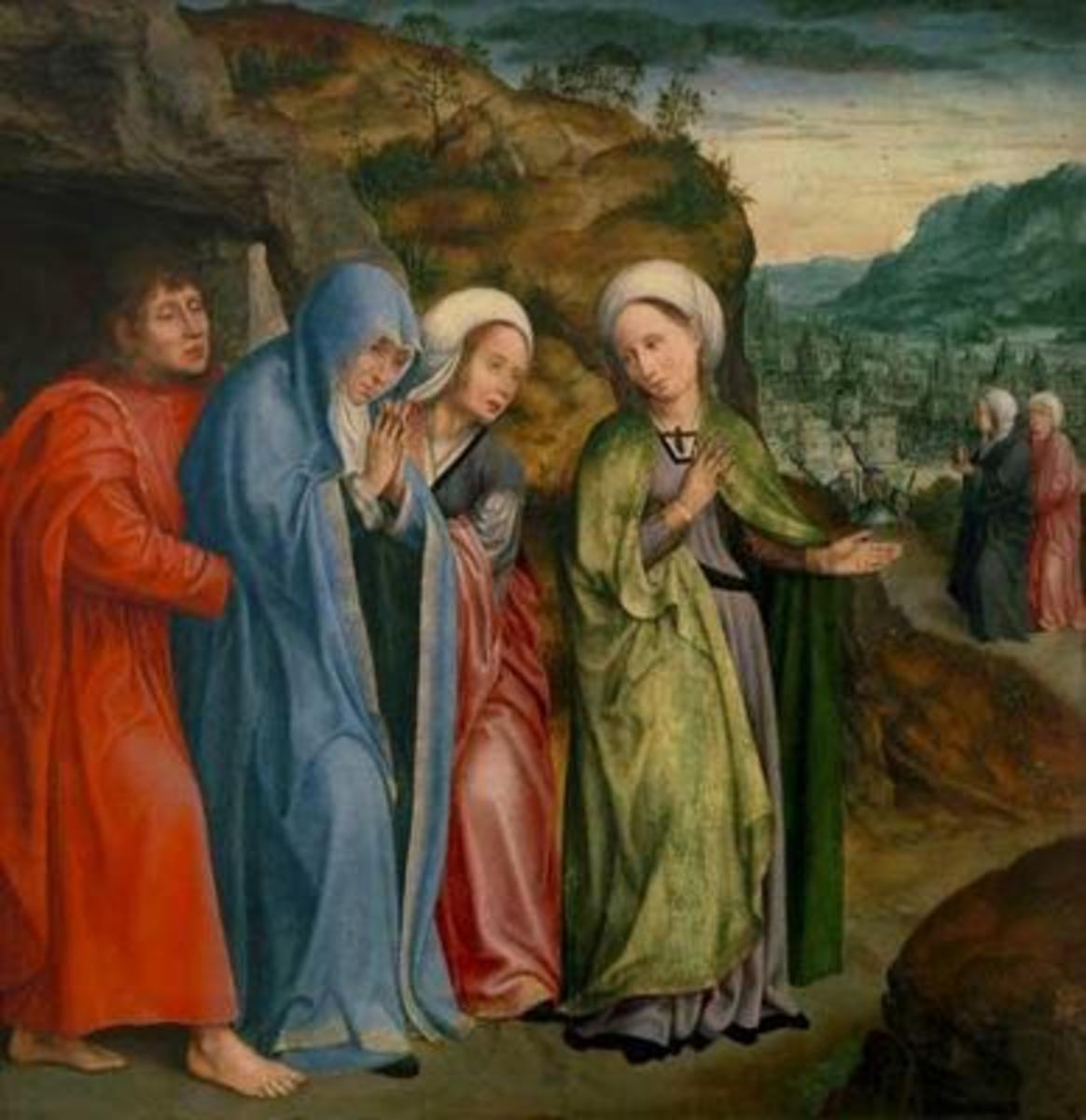Bible: What Does Mark 1 Teach Us About the Early Days of Jesus' Ministry?
John the Baptizer
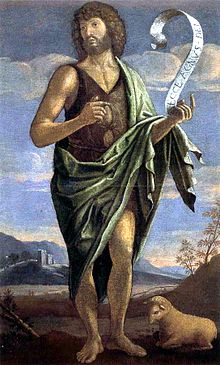
The River Jordan
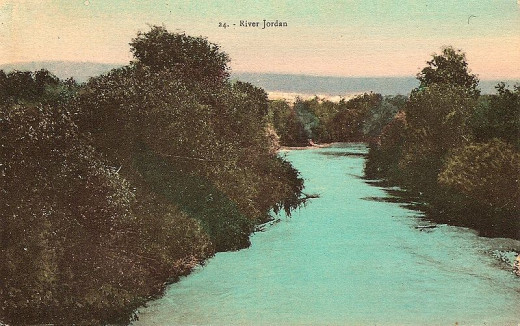
The Arrival of the Baptizer
THE GOSPEL OF MARK
John Mark (cf. Acts 12:12, 25), the writer of this good news account about Jesus Christ, immediately identifies the Lord with the divine name, “the Son of God” (v. 1).
He links a conflation of Isaiah 40:3 and Malachi 3:1, and attributes their subject—the Lord’s forerunner—to John the Baptizer (vv. 2-4).
This wilderness preacher, while standing in the Jordan River, totally immerses Jewish proselytes who confess their sins; the baptism serves as a witness to their repentance, symbolizing their cleansing from sins (v. 5).
A rustic with unusual tastes in attire and diet, John regards himself as an unworthy servant who nevertheless proclaims the parousia of a Mightier One who will succeed him and baptize with/in the Holy Spirit (vv. 6-8; cf. Matt. 3:11).
[Spirit baptism places believers into the body of Christ (see 1 Cor. 12:13ff).]
The Immersion of Jesus Christ
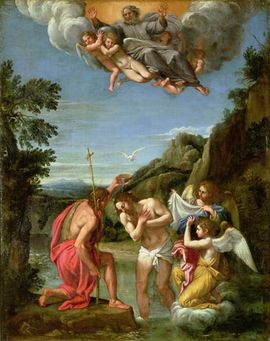
The Temptation of the Christ
view quiz statisticsBaptism and Satanic Temptation
This Mightier One, the Galilean from Nazareth, arrives at the Jordan soon thereafter, and John immerses Him (v. 9).
[“Coming up out of the water” (v. 10a) clearly indicates the only Scriptural mode of baptism: immersion; nowhere does anyone submit himself to sprinkling or pouring.]
Mark uses his characteristic adverb “immediately” for the first time here to express the intimate union existing among the Persons of the Triune Godhead.
As soon as Jesus submits to immersion, which identifies Him with humanity and its sins, both the Spirit (who appears in the form of a dove, a symbol of gentleness and innocence, descending from a parted heaven) and the Father (heard from that heaven through a voice) identify Him.
Then the Father acknowledges Christ’s righteous obedience as that of His “beloved Son” (v. 10b-11).
The second time Mark uses the word “immediately” appears after Jesus’ baptism; it is associated with the Spirit’s impelling the Lord to go into the desert (v. 12).
Three factors characterize Christ’s forty-day wilderness experience: spiritual temptation, physical desolation and possible danger, and heavenly support.
The angelic adversary (Satan) tempts Him (see Matt. 4); wild beasts visit Him; and God’s good “messengers” comfort Him (v. 13).
The Gospel
view quiz statisticsJesus and His Disciples
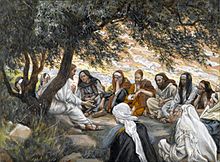
The Good News of the Kingdom
After returning from the desert, Jesus replaces John (whom Herod has thrown into prison) as the Evangelist of the kingdom; Mark’s account includes slightly different details than Matthew’s, recording not only that the kingdom has drawn near, but that “the time is fulfilled” for its arrival.
In addition to a call for repentance, Jesus commands that the people “believe in the gospel” (vv. 14-15).
[What does “fulfilled” mean?
God was offering the kingdom to the Jews, but they rejected it.
True fulfillment of the promise passes to a generation that will accept Him as Savior.
What, then, is the content of this gospel?
Repent of your sins and believe that Jesus is the promised Messiah, and you will enter the kingdom.]
Jesus’ calling of the two sets of brothers in Mark does not substantially differ from Matthew’s account, except for one point.
Mark mentions that Zebedee, John and James’ father, had hired servants, indicating that he (and they) sacrificed financially by obeying God’s commission (vv. 16-20).
Synagogue

Jesus' Control Over Demons
The three of them immediately enter a Capernaum synagogue on the Sabbath, and Jesus begins to teach (v. 21).
His authoritative rhetoric astounds the audience, being so unlike that of the scribes who merely quote the pronouncements of earlier teachers (v. 22).
Suddenly, a demonized attendee, recognizing Jesus’ identity (“I know who You are—the Holy One of God!”), cries out, fearful that He had come to destroy them (i.e., the demons) [vv. 23-24].
Christ commands them to “be muzzled,” and then casts them out of the man (vv. 25-26).
The amazement of the witnesses increases, as they must consider not only His “new doctrine” but also His authority over the spirit world (v. 27).
Jesus’ fame immediately begins to spread throughout Galilee (v. 28).
Simon Peter

Jesus' Healing Ministry
After the synagogue service, Jesus visits Simon and Andrew’s house where He finds Simon’s mother-in-law lying sick with a fever, and He immediately heals her.
In gratitude, she begins to serve them (vv. 29-31).
[Simon Peter was married, but no one ever mentions his wife’s name (cf. 1 Cor. 9:5 where Paul calls him Cephas (rock).
His being married mitigates against the Roman Catholic dogma concerning priestly celibacy.]
After sunset—at the beginning of the next day—many people carry their sick to Simon’s house, and Jesus begins His healing ministry in earnest (vv. 32-34).
[Mark engages in some hyperbole—“the whole city was gathered together at the door”—and is the only writer to emphasize that Jesus forbids demons to speak, “because they knew Him” (v. 34; cf. 1:24-25).]
Well before dawn, the Lord rises and seeks out a place to pray (v. 35).
Not finding Him when they wake up, Simon and others organize a search party of sorts (v. 36).
When they find Him, they tell Him that “everyone is looking for you” (v. 37).
[This statement suggests that they were worried; perhaps, however, they thought He had left them without notice.]
By His response, He indicates that He cannot spend all of His time in Capernaum, but must go elsewhere to continue His itinerant preaching and healing ministry (vv. 38-39).
Mark generally records the same account as Matthew does (vv. 40-44), the only difference being the cleansed leper’s disobedience to Jesus’ strict warning not to tell anyone what He did for him.
While this failure prevents the Lord from coming to Capernaum openly, people still flock to Him in deserted places (v. 45).
© 2014 glynch1





